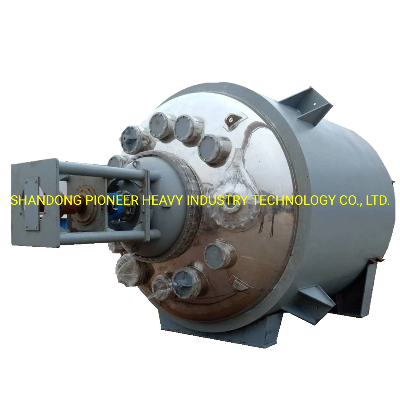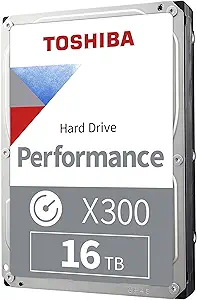PRODUCT DESCRIPTION Glass-lined reactor is kind of pressure
vessel which combine the inside glass fusion with the outside steel
structure into one body, it is resistant to attack from most
chemicals and to mixtures of corrosive materials that is used in a
wide range of chemical processes that involve harsh chemicals.
Glass-lined reactors are meticulously produced with an impermeable,
smooth, anti-stick surface that achieves an optimum balance of
corrosion resistance, thermal properties and mechanical strength.
Glass-lined reactors have become well known and broadly used
for carrying out elevated or reduced temperature and/or elevated or
reduced pressure chemical reactions as well as the blending
(mixing) of non-reacted elements or compounds in field as chemical,
pharmaceutical, bio-tech, food&beverage, flavor&fragrance,
and nutraceutical industry.CE/F series glass lined reactor is
a type of one pieces glass-lined steel vessel with agitator, ,
also named "Close type" or "Monoblock type",it is a model of close
welded reactors and without a large main opening maximize
top head strength and allow for higher pressure ratings. Heating
and cooling method is with a jacket through by medium of steam,
water, thermol oil. SPECIFICATIONS: Capacity: 1600 to
40000 Liters(CE series); 2500 to 50000 Liters(F series) Designed
Pressure of Vessel Body: 0.2 MPa, 0.4 MPa, 0.6 MPa, 1.0 MPa
Designed Pressure of Jacket: 0.6 MPa Designed Temperature: -20 to
200 Deg. C Thickness of Lined Glass: 1.5 to 2.3 mm(CE series); 0.8
to 2.0 mm(F series) Agitator Type (Optional): Propeller type,
Impeller type, Paddle type, Combination type except Frame /Anchor
type. Drive Type of Agitator: Frameproof AC Motor (Ingress
protection should be specified by end user) Reducer Type
(Optional): Vertical type Sealing Type: Single Type Mechanical Seal
(0.4 MPa); Double Type Mechanical Seal (0.6 MPa, 1.0 MPa) Working
Medium: Organic acid, inorganic acid, organic solvent& weak
alkaline except hydrofluoric acid, medium with fluoric-ion, alkali
and phosfate acid which concentration over 30% with temperature
over 180 Deg. C Spark Test for Lining-glass: 20KV after glass-ling,
and 10KV before shipment RT Inspection for Welding Joint: 20%
for vessel and 100% for headHydraulic Test: Designed
pressure+0.15~0.2Mpa Temperature Resistance: Chilling shock: 110
Deg. C, Thermal shock: 120 Deg. C Standard: ASME VIII DIV1
(Unstamped), DIN 28136 (CE series) GB/T 25026, GB/T 25027, HG/T
2372 (F series) Or Against customized standard APPLICATION WHERE
GLASS LINED REACTOR USEDSuitable materials with operating
condition:The reacting materials involved highly corrosive acids
and alkalis;High-purity process where cleanliness is important, for
the ability to clean as well as to minimize the risk of metal
contamination;In polymerisation, to prevent polymers from sticking
on vessels.Inapplication materials and operating
conditions:Hydrofluoric acid & media which containing fluoride ions
with all concentration and temperature;Phosphoric acid with
concentration is over than 30% with temperature is higher than
180°C;Alkaline which PH value more than 12 with temperature higher
than 80°C;When the temperature changes drastically during glass
lined equipment working, the excessive thermal stress will cause
the lined glass damage. Therefore, the temperature should be raised
or lowered slowly during equipment operating.PRODUCTION
PROCESSFEATURES OF GLASS LINED EQUIPMENTCorrosion Resistance -
glass is extremely resistant to corrosion by acids and alkalies
(except for hydrofluoric acid and hot concentrated phosphoric acid)
Anti-stick - many substances will not stick to glass, but will
stick to metal Purity - glass has high quality standards for food
and drug applications Flexibility - glass can handle a diverse
range of chemical conditions Easy To Clean - glass-lining surface
enables quick, easy cleaning and sterilization Absence Of Catalytic
Effect - eliminates the possibility of catalytic effect that can
occur in vessels made with various exotic metals Economy - the cost
is comparable to stainless steel and most alloys Excellent
Insulation - When does 20KV high-frequency spark testing, the
electric spark can not penetrate the glass linings Temperature
Resistance - Thermal conductivity is only 1 to 0.1 percent of metal
Impact Resistance - The impact resistance of superior products is
260*10-3J Customized Design - Design and manufacture according to
the condition and requirement of customer LINKED
PRODUCTSOpen/Flange Type Glass Lined ReactorVertical Type Glass
Lined Storage TankVertical Type Glass Lined Storage
Tank/RecieverGlass Lined Plate Type Condenser Shell & Tube
Type Glass Lined Heat ExchangerHOW TO AVOIDING DAMAGE IN GLASS
LINED EQUIPMENTSThere are four main categories of failure modes
that can occur in glass lined equipment: mechanical, thermal,
electrical, and chemical. These issues, however, can be eliminated
or drastically reduced through the identification of the various
type
Related products about Monoblock Type Jacketed Glass Lined Reactor
-
 Waste Tyre Plastic Recycling Machinery Machine Tire Crusher Production Line Rubber Crumb Grinding Machine Equipment Tire Shredder
Waste Tyre Plastic Recycling Machinery Machine Tire Crusher Production Line Rubber Crumb Grinding Machine Equipment Tire Shredder
-
 Stretch Plastic Blowing Pet Bottle Making Blow Molding Machine Bottles Stretch Automatic Pet Bottle Blowing Machine
Stretch Plastic Blowing Pet Bottle Making Blow Molding Machine Bottles Stretch Automatic Pet Bottle Blowing Machine
-
 Waste Plastic Pet Bottle, Water Bottle Flake, PP/HDPE/LDPE PE Film Jumbo Woven Bags Plastic Crusher Machine, Plastic Crushing Washing Recycling Machine
Waste Plastic Pet Bottle, Water Bottle Flake, PP/HDPE/LDPE PE Film Jumbo Woven Bags Plastic Crusher Machine, Plastic Crushing Washing Recycling Machine
-
 Type 2 Wall-Mounted Electric Car Charging Station 7kw /11 Kwelectric Vehicle Charging Station Home Wallbox AC EV Charger Single Phase or 3three Phase
Type 2 Wall-Mounted Electric Car Charging Station 7kw /11 Kwelectric Vehicle Charging Station Home Wallbox AC EV Charger Single Phase or 3three Phase
-
 G-View G12W Wholesale Auto Car LED Headlight Bulb High Power H13 H11 9005 H7 H4 Car LED Headlights LED Car Lights
G-View G12W Wholesale Auto Car LED Headlight Bulb High Power H13 H11 9005 H7 H4 Car LED Headlights LED Car Lights
-
 New Design Porcelain Round Plates Dinner Set for Wedding and Banquet
New Design Porcelain Round Plates Dinner Set for Wedding and Banquet
-
 China 2023 New Design Super Soft 100% Polyester Microfiber Knitted Oversized Decoration Hoodie Blanket
China 2023 New Design Super Soft 100% Polyester Microfiber Knitted Oversized Decoration Hoodie Blanket
-
 Handmade Art Creative Materials Thickened White Paper Cup DIY Disposable Handmade Colored Paper Cup
Handmade Art Creative Materials Thickened White Paper Cup DIY Disposable Handmade Colored Paper Cup






